Composite timber can be a low-maintenance and sustainable alternative to wood in home landscaping projects. It has been manufactured to be stain and blemish resistant, without needing an annual sealant, and comes in a wide range of colors and textures. Composite timber made with recycled content gives new life to plastic waste that otherwise might end up in landfills.
Homeowners face many material choices for their landscapes, and choosing the most resilient and low-maintenance material that also has the look you want can be a complex decision. Learn more about this low-maintenance alternative to wood to decide if it’s worth the initial investment to have it installed.
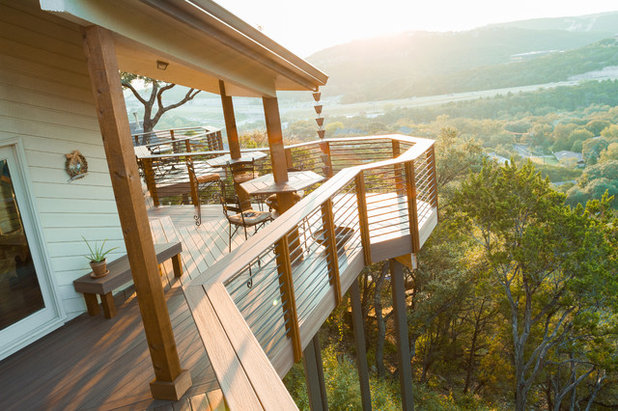
TimberTown
The basics. Composite timber is produced from plastics and fiberglass bonded together to create a very strong product. Composite timber is designed and shaped to mimic real wood timber and comes in sizes similar to lumber’s nominal sizes.
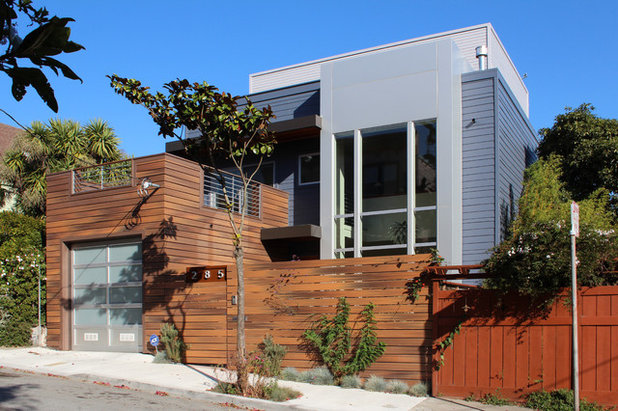 Cost.
Cost. Composite timber is available at local hardware stores for small DIY projects, and costs $7 to $40 per board. Hiring a professional contractor will get you a better material price at a wholesale rate, plus you will pay some markup, transportation fees and the cost of labor to install. The total cost of using a professional varies by region and the design-build or landscape contractor you choose.
A composite timber deck costs several thousand dollars to install; the exact price will depend on your square footage in addition to the factors mentioned above. A good rule of thumb is that the cost starts at around $9 per square foot when hiring a pro. That’s a little higher than the average starting cost of a real wood deck, which can be as low as $7.50 per square foot.
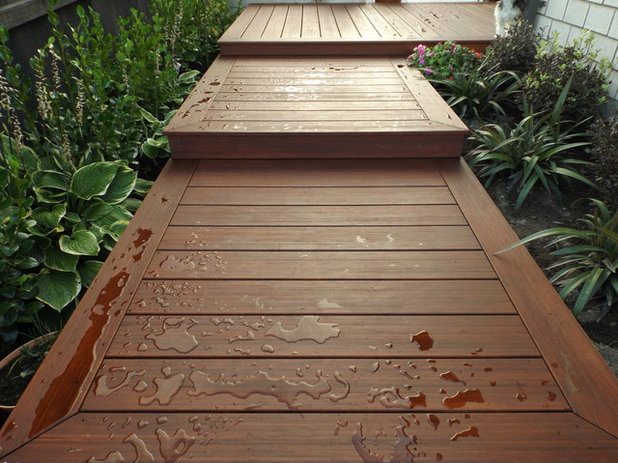
Buildpro One Stop Deck Shop
Pros:- Made from recycled content
- Rot resistant and pest free
- Does not absorb water
- Low maintenance (compared with real wood, which needs to be oiled, stained and/or sealed semiannually)
- Extremely durable
- Easy material to install; does not split or crack
- Many different colors and finishes available
Cons:- Can cost more than real wood initially
- Can have an artificial appearance
- Requires annual pressure washing in moist and humid climates
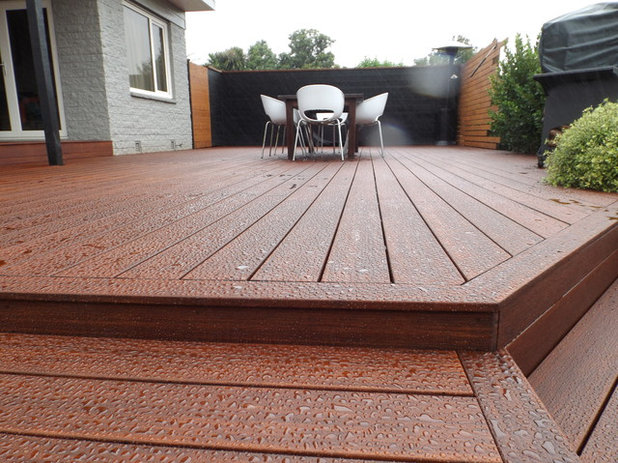
Buildpro One Stop Deck Shop
When it’s a sustainable choice. Composite timber is a sustainable material choice when its plastic content is made from at least 50 percent recycled postconsumer waste. Composite timber made with recycled plastic gives new life to plastic waste, diverting it from our oceans and landfills. Composite timber, when chosen instead of a tropical hardwood, also puts less strain on global forestry harvesting.
The key to choosing a sustainable product for composite timber is to look closely at the product specifications for the percentage of recycled plastic. Additionally, ask the maker or supplier where the product is manufactured to make certain that it is produced regionally — within 100 miles of where you live. If it has little to no recycled content and is manufactured outside of your region, it doesn’t earn any sustainability points. Locally sourced materials will always win out, so don’t overlook a local hardwood from a reputable source if there are no composite timber manufacturers near you.
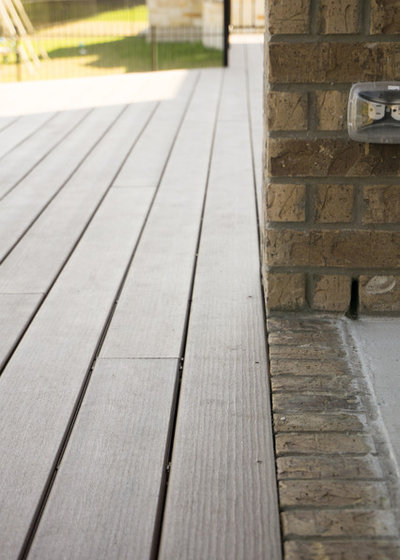
TimberTown
Installation notes. Working with composite timber is similar to working with real wood. Remember to leave some space between boards for water and air circulation. Just like wood decking, composite timber has the option for recessed hardware for a clean, modern look.
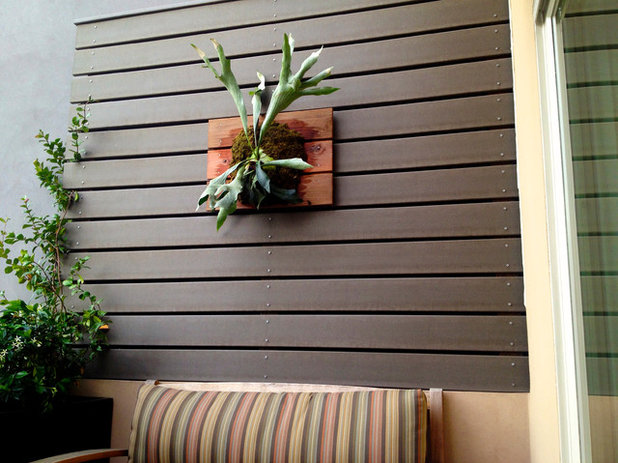
Sculpt Gardens Inc.
How to Use Composite Timber in the Landscape
Wall veneers. Composite timber can be attached to an existing wall as a way to add texture or color. It allows easy attachment and hanging, as seen with the mounted staghorn fern here.
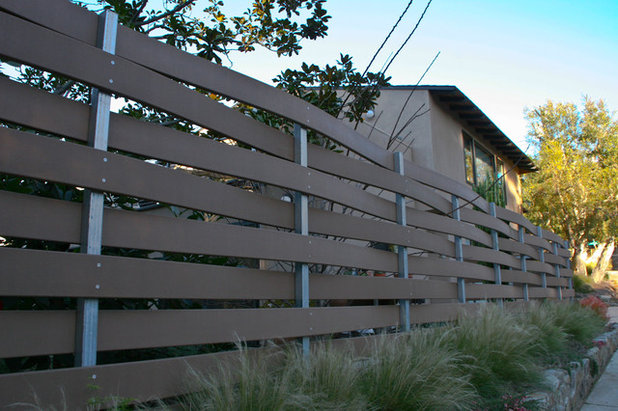
Silva Studios Architecture
Fencing. This fence is an interesting example of composite timber that’s been shaped into a woven design. The timber is strong yet flexible and works great in this application. The boards are spaced a little apart to allow for some air and light to permeate the fence. The metal posts offset the earthy timber color, and mounding grasses soften the ground at the foot of the fence.
See more inspring fence designs
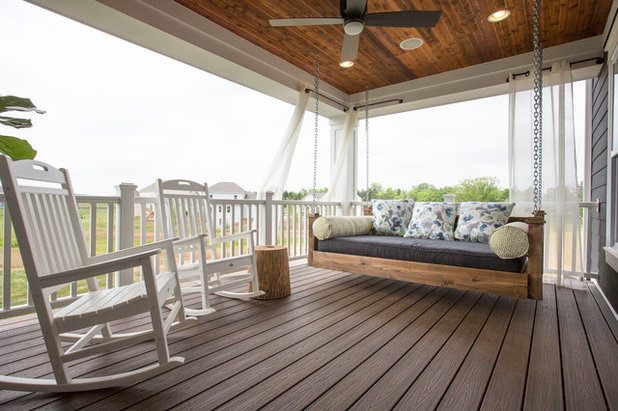
Romanelli & Hughes Custom Home Builders
Porches and decks. Decking is the most common use for composite timber, and it can be used as an outdoor floor anywhere — porch, terrace, balcony or boardwalk. You can choose from various colors that are inspired by real wood in shades from reddish browns to silver-grays. Some options also have different grain patterns, modeled after real wood, that give the recycled composite timber floor a great look outside.
What to Know About Adding a Deck
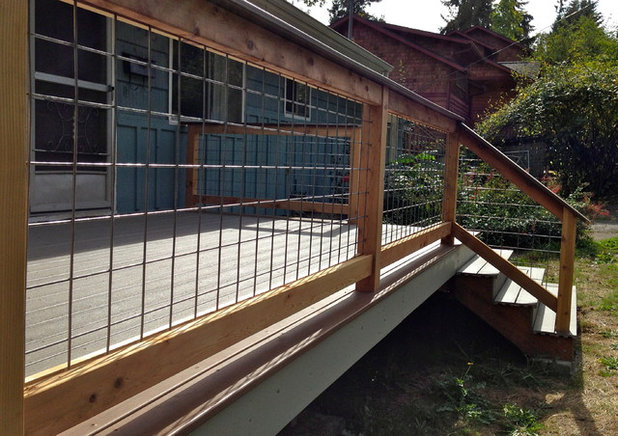
LandArc Landscaping & Design
Trim and railings. Composite timber for decks and railings can be mixed with natural hardwoods; you don’t need to use one or the other exclusively in your deck application. Finishing components for railings, posts and trim are available in different product lines of composite decking. In the space here, composite wood decking has been combined with a cedar frame railing topped with a TimberTech top rail.





